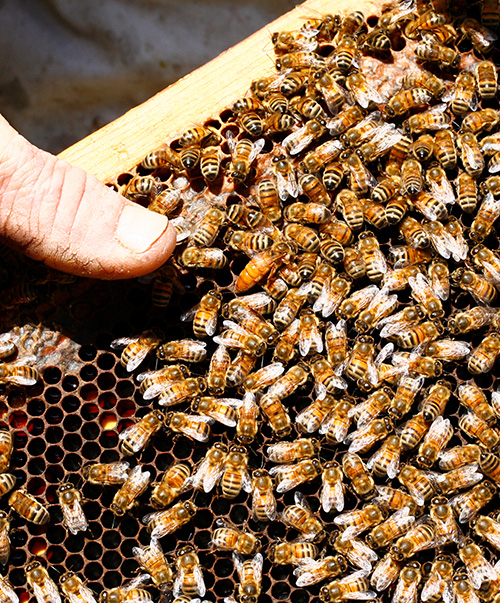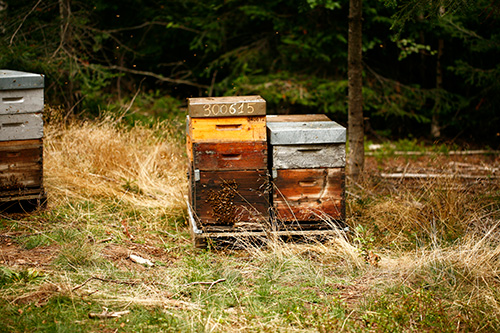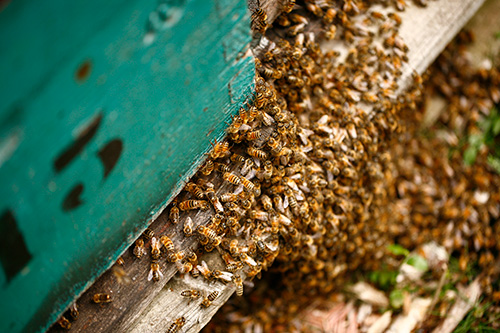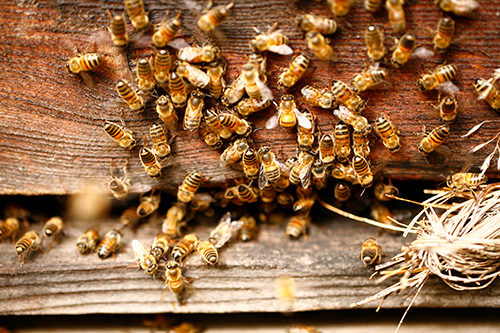
Bees evolve in a society wherein each insect plays a specific role during its lifetime to ensure the longevity of the colony.
The single Queen supervises the cohesion of the colony thanks to the secretion of her pheromones throughout her lifetime; which is a maximum of 5 years.
The bees that make up her court transmit the pheromones to the bees in the colony thus giving them information about the presence of their Queen.
Bees form the biggest colonies of 15,000 to 30,000 during the winter. They can reach a population of 60,000 or more by the end of spring, with numbers decreasing during the month of August.
They are responsible for the smooth running of life in their colony. Their lifespan is 40 to 50 days in season. Winter bees can double their lifespan. Males and especially male bumblebees are mainly present when the Queen is being renewed to ensure fertilisation. Their numbers can vary from 2,000 to 5,000, depending on the size of the colony. The male bees’ lifespan is directly linked to the presence of food found by the bees. Indeed, given their need to consume great quantities, if food is scarce, the majority will die.



